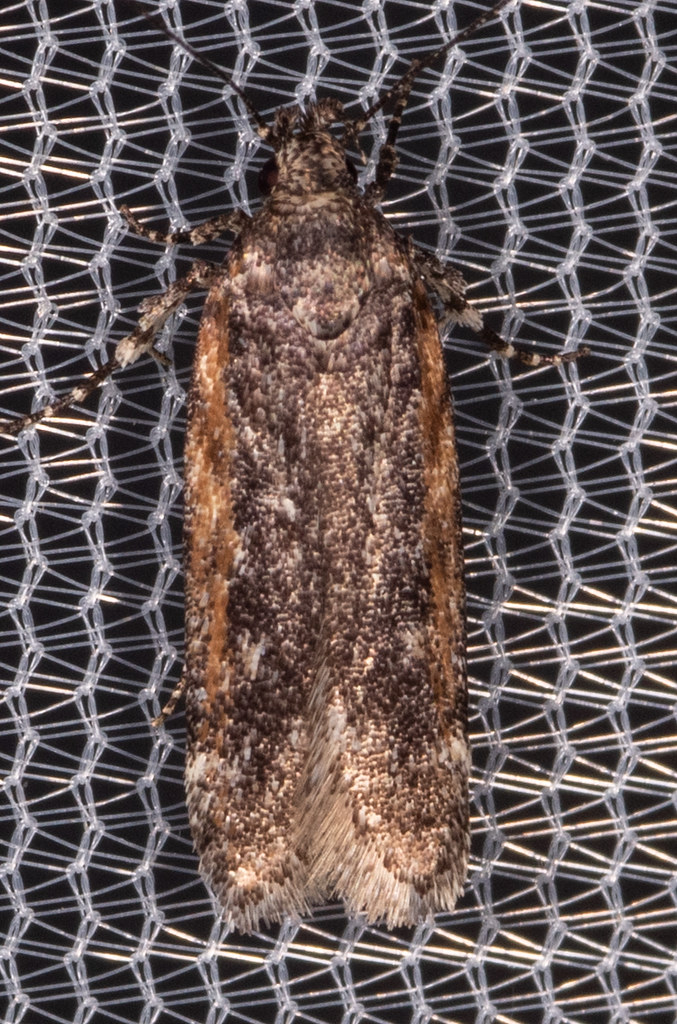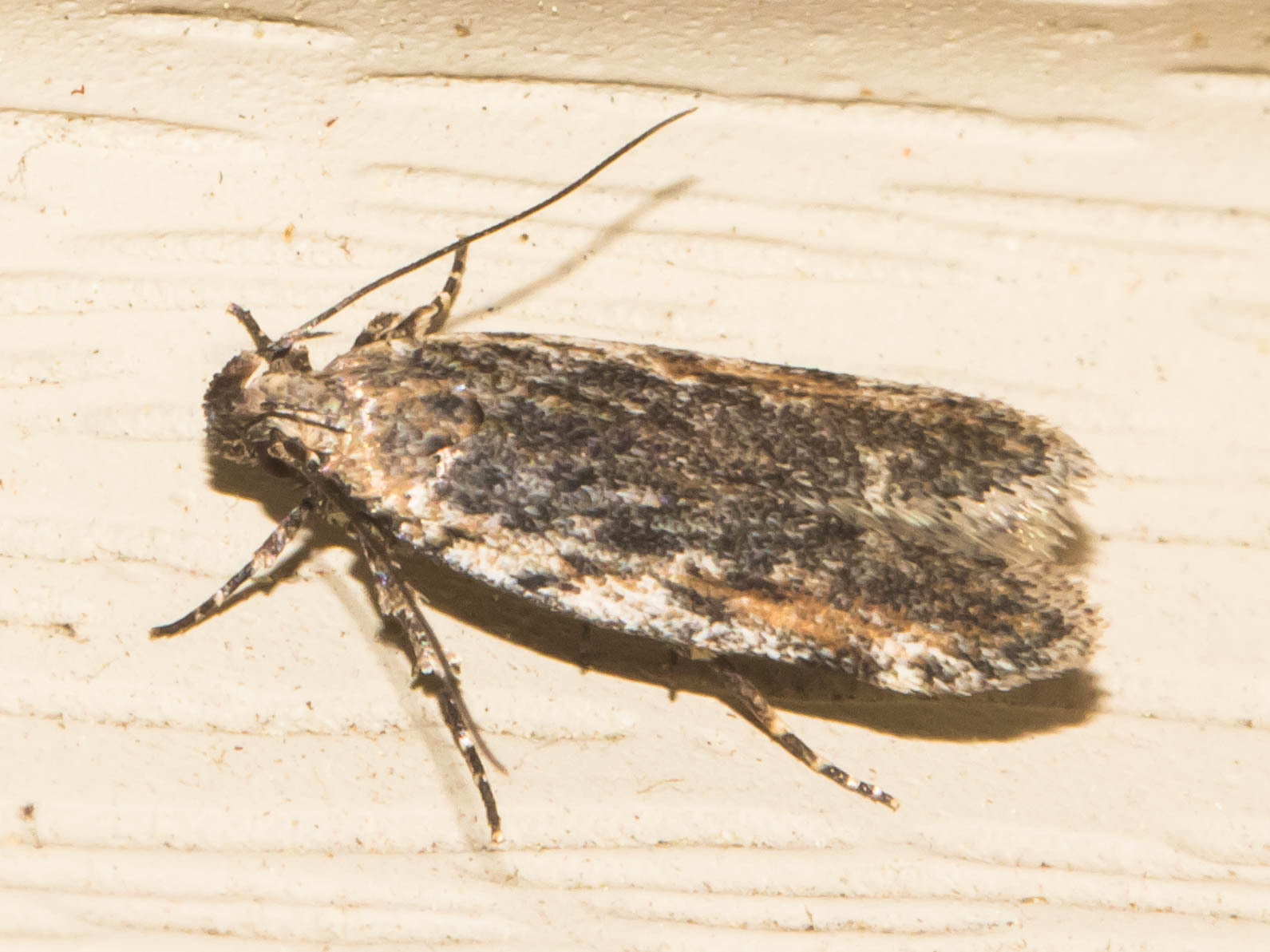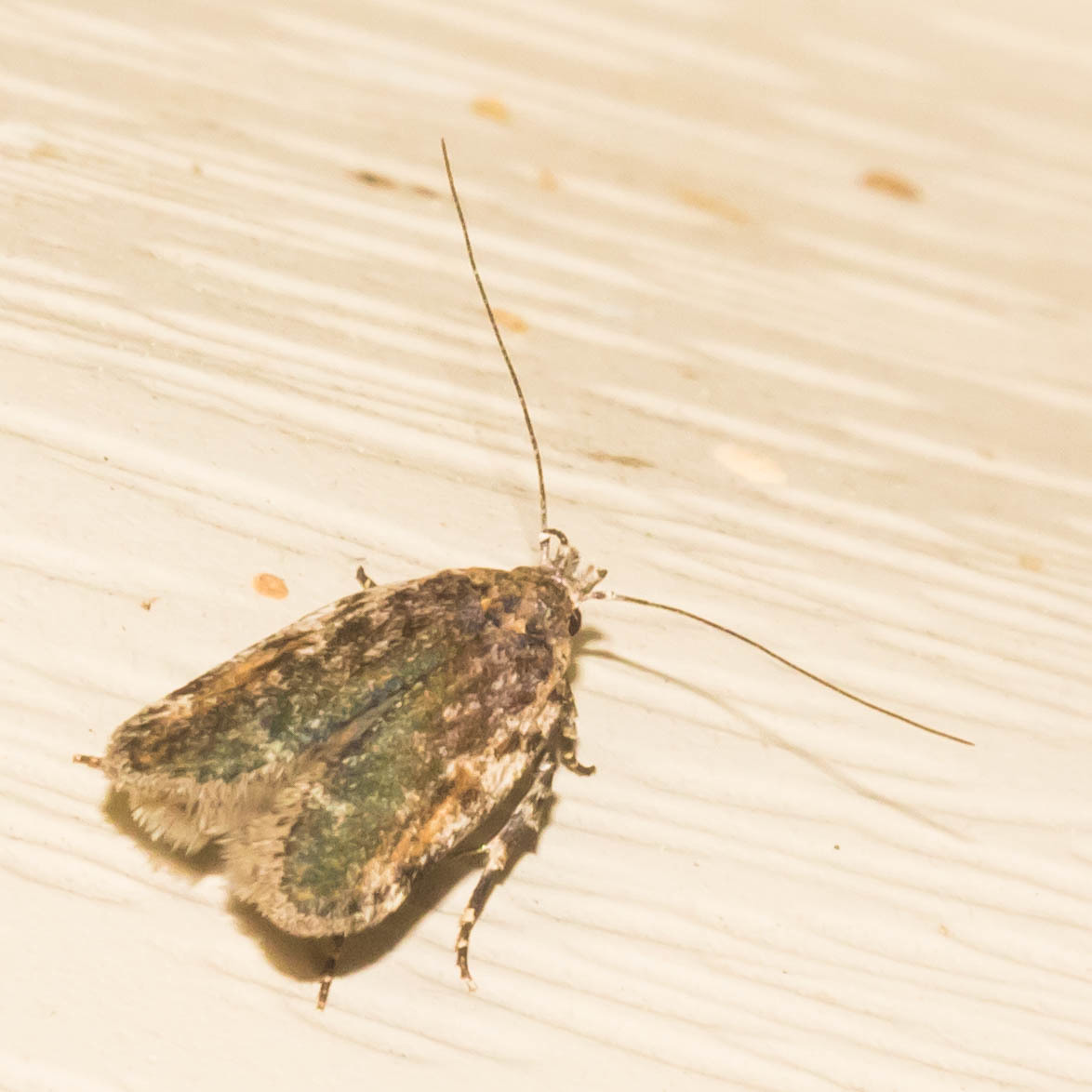Map Snapshot










23 Records
Seasonality Snapshot
Source: Wikipedia
| Filatima pseudacaciella | |
|---|---|

| |
| Scientific classification | |
| Domain: | Eukaryota |
| Kingdom: | Animalia |
| Phylum: | Arthropoda |
| Class: | Insecta |
| Order: | Lepidoptera |
| Family: | Gelechiidae |
| Genus: | Filatima |
| Species: | F. pseudacaciella
|
| Binomial name | |
| Filatima pseudacaciella (Chambers, 1872)
| |
| Synonyms | |
| |

Filatima pseudacaciella, the dusky-backed filatima moth, is a moth of the family Gelechiidae. It is found in North America, where it has been recorded from California, Illinois, Indiana, Kansas, Kentucky, Louisiana, Maine, Massachusetts, Mississippi, New Hampshire, New York, Ohio, Oklahoma, Ontario, Tennessee and West Virginia.[1][2]
The forewings are dark purplish-brown, streaked and flecked with white and ocherous especially. A streak extends from the base nearly to the apex, just within the costal margin of which the prevailing hue is ocherous, mixed with white. A white costal spot at the beginning of the costal cilia, and an opposite dorsal one, both small. The hindwings are pale ocherous-brown.
The larvae feed on the leaves of Robinia pseudacacia. They have been observed feeding within the mines of Macrosaccus robiniella, but also feed externally.[3] Young larvae are green with darker green longitudinal markings and a shining black head. Older larvae are pale brown with two dark brown longitudinal stripes and a row of dark brown spots.[4]
References
[edit]- ^ Filatima at funet
- ^ mothphotographersgroup
- ^ Davis, DR; De Prins, J (2011). "Systematics and biology of the new genus Macrosaccus with descriptions of two new species (Lepidoptera, Gracillariidae)". ZooKeys (98): 29–82. doi:10.3897/zookeys.98.925. PMC 3095132. PMID 21594070.
 This article incorporates text available under the CC BY 4.0 license.
This article incorporates text available under the CC BY 4.0 license.
- ^ Can. Ent. 4 (6): 107
 This article incorporates text from this source, which is in the public domain.
This article incorporates text from this source, which is in the public domain.













